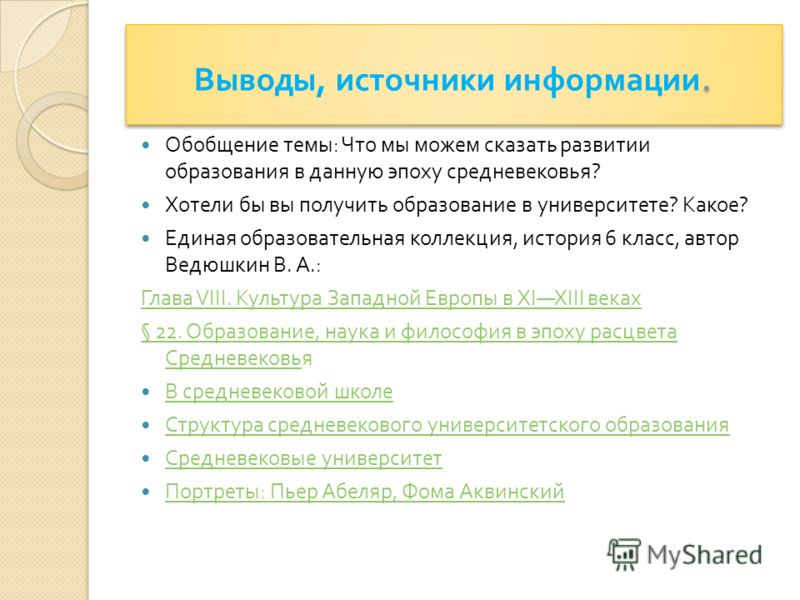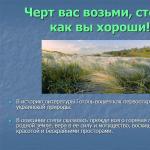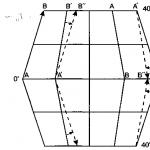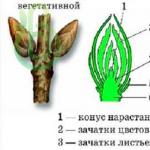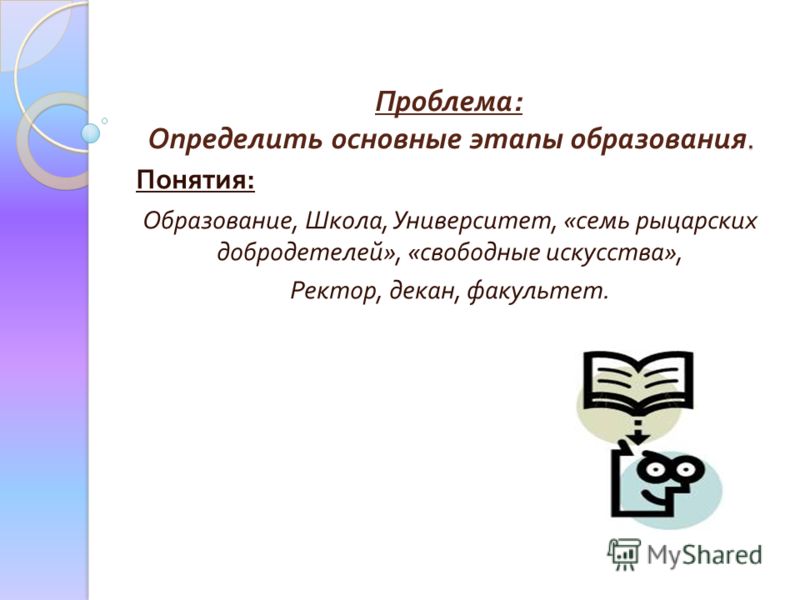
In the medieval school In medieval Europe, there were types of schools: parochial (at a church parish), in which the priests prepared a shift from the laity; monastic, where they taught boys preparing to be tonsured monks. They also trained the lower clergy; cathedral or cathedral schools were opened at episcopal residences. In all schools, children of 715 years old were taught the basics of literacy and singing, there was a strict discipline.
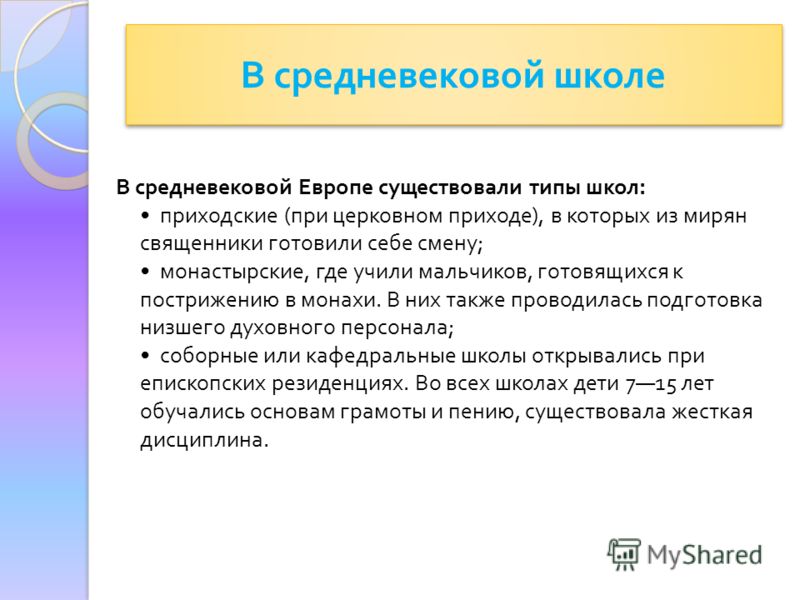
Grammar, rhetoric and dialectics (knowledge and skills for conducting disputes on religious topics) were taught in monastic and cathedral schools. In larger educational institutions of this type, schools, in addition to the listed subjects, taught arithmetic, geometry, astronomy with a religious focus (equipping students with the skills to calculate the time of the onset of Christian holidays, build churches), music (singing psalms and prayers). All these subjects, studied in monastic and cathedral schools, were known under the name of "seven liberal arts". Education mainly served the needs of the church.
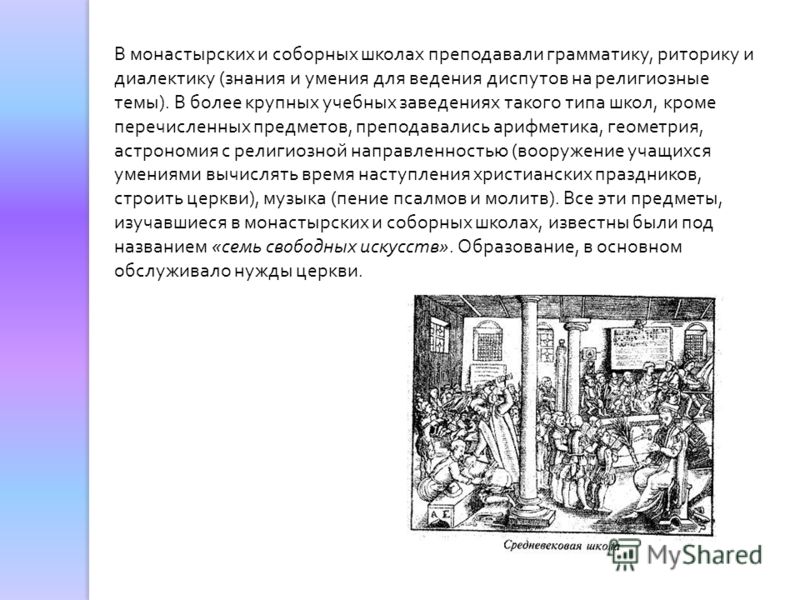
In the 18th century secular educational institutions began to emerge, combining general education with special education: for example, the medical school in Solerno, the law school in Bologna and Padua (Italy). The development of manufactory, crafts and trade, the growth of cities contributed to the emergence in the XIII-XIV centuries. new type - shop and guild. They were created for merchants and artisans. Guild schools provided the children of artisans with an elementary education. This type of school was maintained at the expense of the guilds, provided general education, and the training in the craft was carried out in the families of artisans or in the process of guild apprenticeship. Guild schools were created by guild associations of merchants. These schools were paid, the children of wealthy parents studied in them: the sons of artisans were usually not allowed in them. In workshop and guild schools, education had a practical orientation, which was expressed in the increased role in them of mathematics and the disciplines of the natural science cycle, which were of real vital importance for future merchants and artisans. The basis of education in these schools was the native language. The discipline was also severe: the teacher could resort to physical punishment.
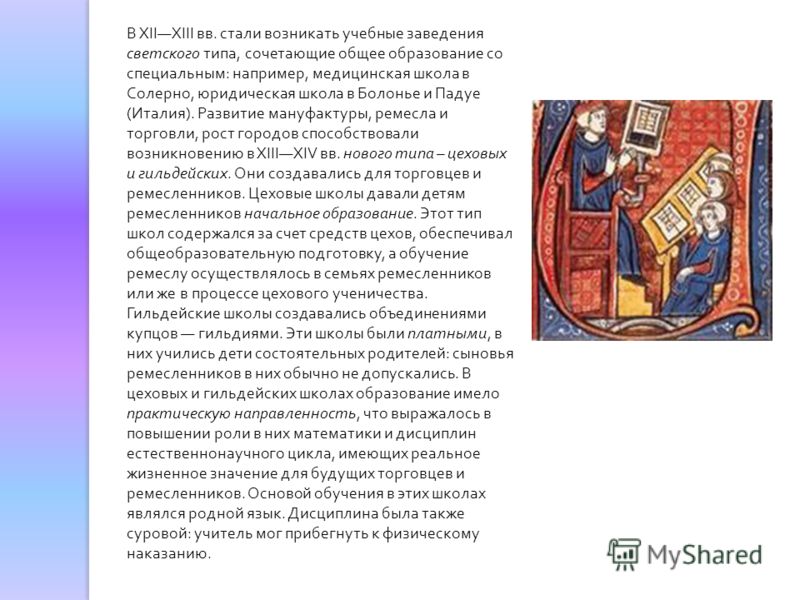
In parallel with the church school system and urban educational institutions, a secular, knightly education system existed in the Middle Ages. It was based on the "seven knightly virtues", which only outwardly, by name, can be recognized as analogous to the "seven free arts" of medieval schools. In essence, by their content (riding, swimming, wielding a spear, fencing, the ability to hunt, play chess, write poetry or play musical instruments), the “seven knightly virtues” reflected the specific features of the position and customs of representatives of this social stratum of medieval society.
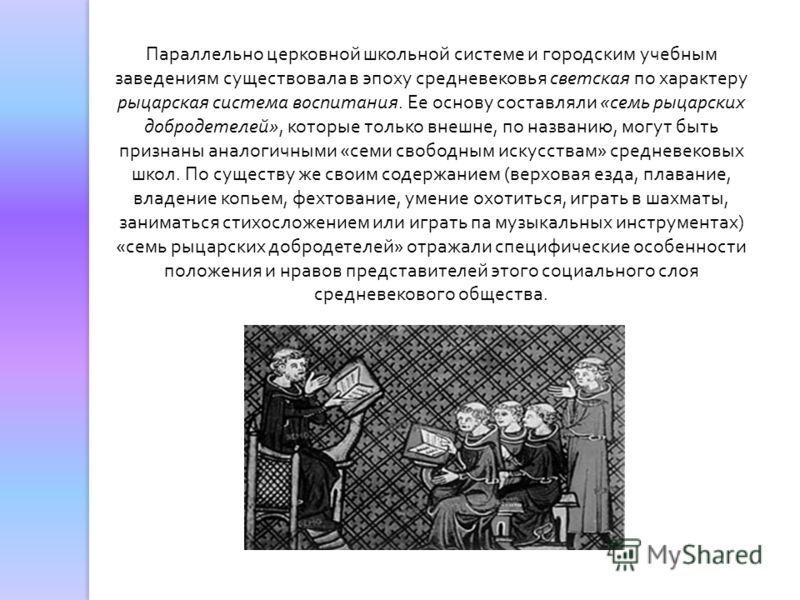
Medieval University The first universities arose in the 12th century, partly from episcopal schools that had the most important professors in the field of theology and philosophy, partly from associations of private teachers of specialists in philosophy, law (Roman law) and medicine.
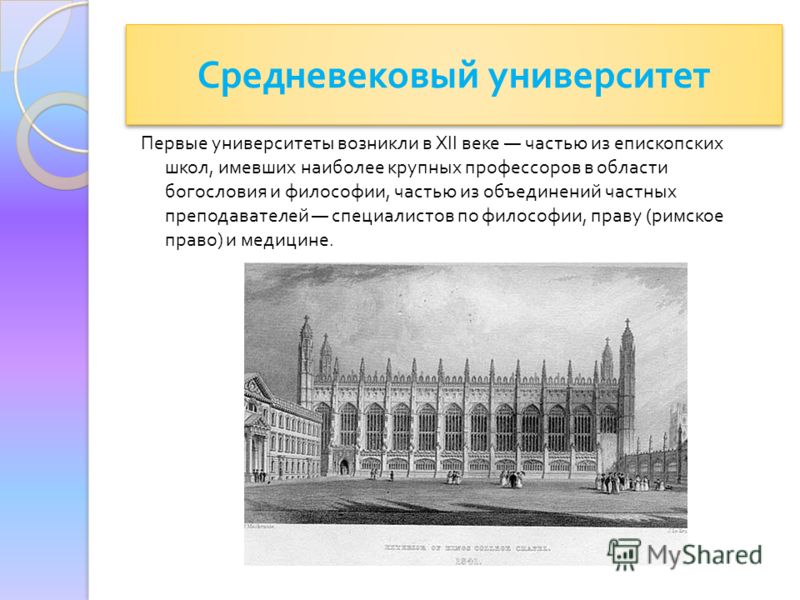
Teaching in medieval universities was conducted in Latin. The main method of university teaching was the lectures of professors. A common form of scientific communication was also disputes, or public disputes, arranged periodically on topics of a theological and philosophical nature. The discussions were attended mainly by university professors. But disputes were also arranged for scholars (scholar students, from the word Schola school).
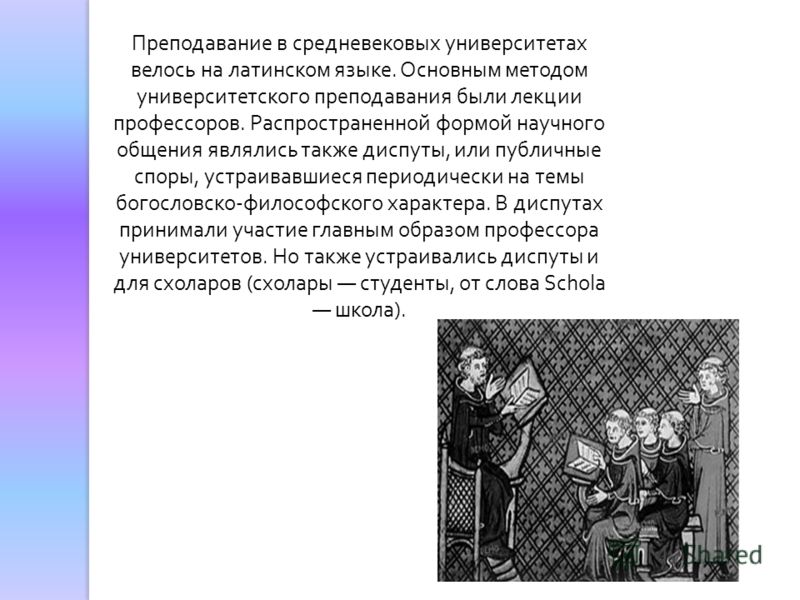
Conclusions, sources of information. Generalization of the topic: What can we say about the development of education in this era of the Middle Ages? Would you like to get an education at a university? Which? Unified educational collection, history grade 6, author Vedyushkin V.A.: Chapter VIII. Culture of Western Europe in the XIXIII centuries § 22. Education, science and philosophy in the heyday of the Middle Ages§ 22. Education, science and philosophy in the heyday of the Middle Ages In a medieval school In a medieval school The structure of medieval university education The structure of medieval university education Medieval university Medieval university Portraits: Pierre Abelard, Thomas Aquinas Portraits: Pierre Abelard, Thomas Aquinas
